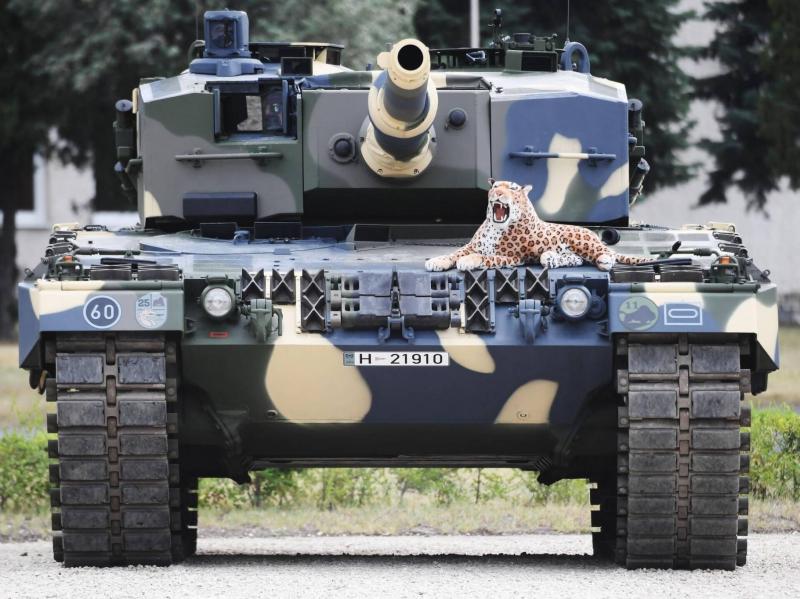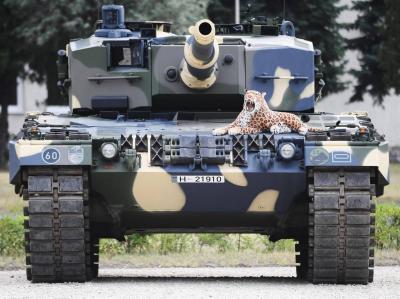The advanced "Leopard 2" tanks that Kyiv received from Germany and Western allies were supposed to be the spearhead of Ukraine's counteroffensive against Russian forces in the south of the country. However, the lack of progress in this offensive has led to the deployment of these tanks on the eastern front to fend off Moscow's attacks.
In a high pine forest covered in snow in the Lyman-Kupyansk area of northeastern Ukraine, a "Strv," the Swedish version of the "Leopard 2" tank weighing 59 tons, slowly leaves its shelter, a large box dug into the ground. The front in this area has been frozen for more than a year, but since September, Russian forces have been launching a regular offensive and have made some small gains near Kupyansk.
Ukraine hoped to see these armored vehicles break through Russian lines and reach the Crimean Peninsula; however, what they are doing is bombarding the Russians with long-range artillery rather than being combat tanks moving deep into territories occupied by Russian forces. Ruslan, a 25-year-old, states that "the main mission of this tank in this area is to inflict as much damage as possible on the enemy, particularly at infantry positions."
He adds that as a member of a company in the 21st Mechanized Brigade, "in other words, it is not being used in the same way it was during the counteroffensive" in southern Ukraine. After prolonged hesitation, Germany, along with a group of European countries, decided in early 2023 to provide about 70 "Leopard 2" tanks to Kyiv, which had been demanding them to carry out a major attack aimed at liberating the occupied southern territories. Until then, Ukraine only had old Soviet tanks, so new battalions like the 21st Brigade were formed to lead the large counteroffensive in the summer in Ukraine, being equipped with Western-made equipment like "Leopard 2" tanks.
At that time, Armin Papperger, director of the "Rheinmetall" arms manufacturing group, confirmed that this type of tank allows "the army to break through enemy lines and put an end to a long trench warfare." However, the breakthrough did not occur. Despite regaining some villages, the Ukrainian army's advance halted at the end of August after being worn down by solid defenses prepared by Russian forces for several months.
Faced with a complex network of minefields, trenches, anti-tank traps, powerful artillery, and air superiority, Kyiv's counteroffensive stumbled, and the front remained frozen. Ukraine lost about 12 German-made tanks during the fighting, and Ruslan explains that "Leopard 2" tanks are "very effective, but for wide-ranging attacks, more of them are needed." He states, "We needed to use between 100 and 150 tanks at least to be able to advance," praising the characteristics of these tanks known to be among the best in the world.
On their way to Lyman, two tanks move together, each firing an average of 15 shots towards Russian positions, as it is "more effective," according to company commander Anton, who adds that "there could be two missions daily or two weekly," continuing that "the front has calmed down a bit, winter is coming, and we will not advance forcefully." Anton states, "Currently, we are in a defensive position, but it is crucial to plan how to move forward and reclaim our lands."
He expresses a desire to return to the offensive through a "tank versus tank" battle, clarifying that "this would be more interesting for us, given the strength and characteristics" of the German tank. In the vicinity of the city of Avdiivka, "Leopard" tanks were also deployed to defend this industrial city, which Russian forces have been besieging for two months. A video showed a tank from a Ukrainian brigade that was previously stationed in the south during the counteroffensive targeting Russian positions near Avdiivka in the Donetsk region (east).
The German newspaper "Bild" titled an article commenting on these footage as "This was not planned this way at all." The article stated, "Instead of liberating the south, the 'Leopard-2A6' tanks sent by Germany are used to prevent further territory in the east of the country from falling under Russian control."




